Are you wondering how to pick the right milk bottle teat for your baby?
If your baby is drinking breastmilk or formula milk powder from the bottle, teats also known as bottle nipples are one of the bottle feeding essential items parents need to prepare for.
Most parents face a dilemma when it comes to choosing baby milk bottles and teats. Which type of bottle teat is closest to a natural nipple? More importantly, what type of teat will your baby accept?
You may find that your baby refuses to drink from bottles and you could end up having to run through many brands before settling on one that your baby prefers.
Material and Lifespan of Bottle Teats
In the market, bottle teats are mostly made from latex or silicone. Both materials have their benefits, and you can switch between them.
Latex is a natural material that is softer and more flexible than silicone, which can make it easier for babies to adapt to. It is more resistant to bites. If your baby has a hard time adapting to latex teats, boil it in milk for 3 minutes to get rid of the taste.
Latex is a natural material and it breaks down more quickly compared to silicone, which is a synthetic material. There is a small possibility that your baby may be allergic to latex and thus, unsuitable to use latex teats. When latex teats break down, the teats may feel sticky.
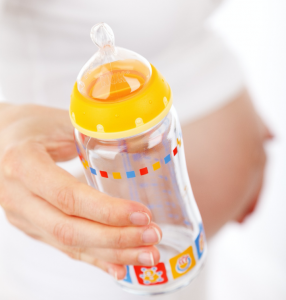
Choosing the right milk bottle teat for your baby: silicon vs. latex
Silicone is a manmade material that is more durable compared to latex. It is clear, firm and tends to be more resistant to temperature, exposure to sunlight and fatty foods. It is heat resistant, meaning that it can undergo many rounds of sterilisation without developing cracks that could breed bacteria.
During wash of milk bottle teats, always ensure that they are thoroughly washed without any breastmilk or formula milk powder residue left behind. Regardless of the material chosen, teats should be replaced every one to two months, or immediately when you notice bite marks, cracks or damage.
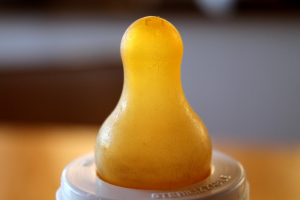
Latex teats are said to feel more like a real nipple.
Shapes of Bottle Teats
Bottle teats come in all shapes and sizes. Some are slim, some are bell shaped and some have a flat end on one side. Baby bottle manufacturers are constantly working to produce a bottle teat that most resembles the feel of a natural nipple.
There are teats with an anti-colic feature, where a vent in the teat allows air to escape when the baby suckles from it. Certain bottle teats have a vacuum and require the baby to suckle harder in order for the milk to be released.
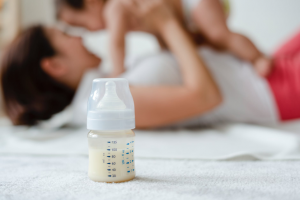
Your baby may take a while to accept a bottle teat, so you may have to get different types of teats for your baby to try.
Flow rate of Bottle Teats
As your baby grows, they will be able to consume more milk and thus, a teat with a corresponding flow rate should be used. A flow rate is how fast the milk goes into your baby’s mouth. The flow rate depends on the number and type of holes in the tip.
Although baby bottle manufacturers categorise their teats by age, it should be noted that the flow rate suitable for your baby may not correspond to his or her age. If you notice that your baby is sputtering and choking, switch to a teat with slower flow.
Conversely, if your baby is frustrated and sucking hard, change to a teat with faster flow.
Teats for newborns have a slow flow and have one hole in the teat. The more holes in the teat, the faster the flow rate. Fast flow teats may have as many as four holes, depending on the brand of teats.
Mothers who direct latch and bottle feed at the same time prefer to continue using slow flow teats as it means that the baby has to suckle harder in order to get milk. Nipple confusion is a common concern for mums who breastfeed and bottle-feed their child.
There are vary flow teats in the market where the flow increases depending on how hard your baby suckles.
Each baby has their own preference, and you should be prepared for some trial and error across the different teat brands before your baby finally settles on one.
Which type of teat does your baby prefer? Let us know in the comments!
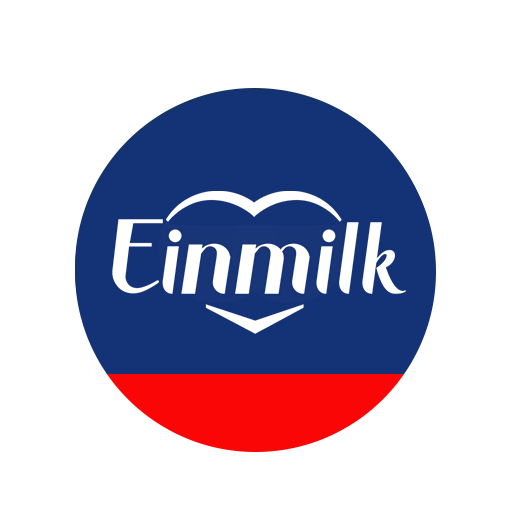
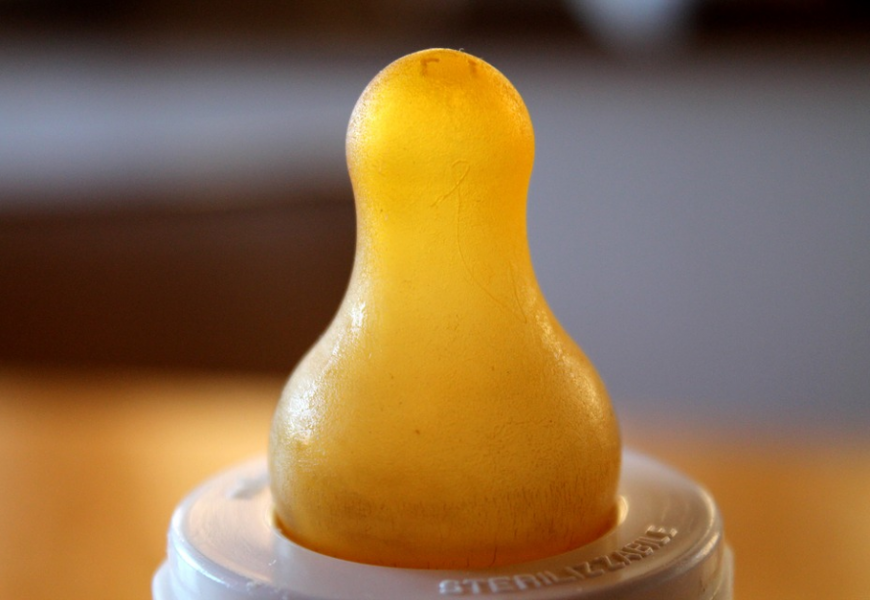
Comments (2)
[…] at a loss as to how to carry, bathe and feed their newborn baby properly. New parents, check this bottle feeding guide to see which teat to choose for your […]
[…] Milk bottles with artificial teats are commonly used in Singapore by parents and caregivers who feed expressed breast milk and formula milk to infants and toddlers. Some milk bottles are more durable than the rest due to the material used. In addition to considering the material of the milk bottle, careful consideration has to be put into the types of teats for the milk bottles. […]